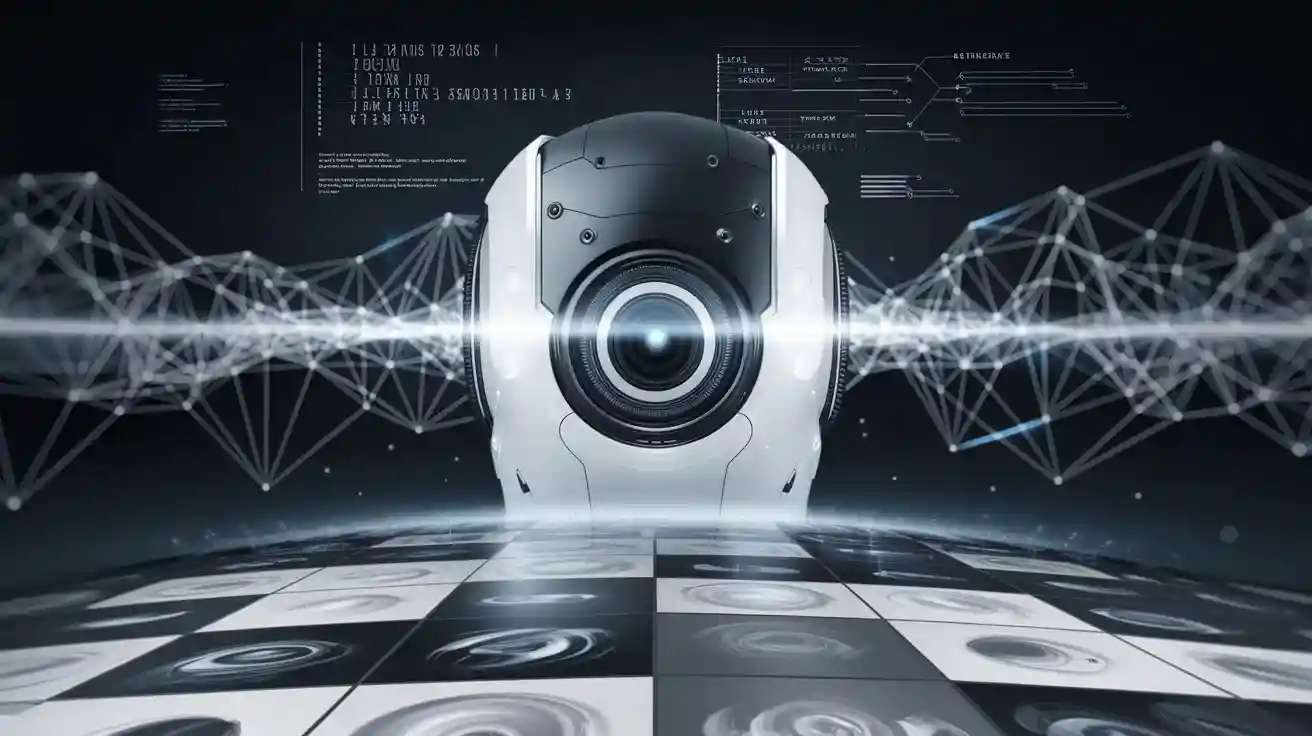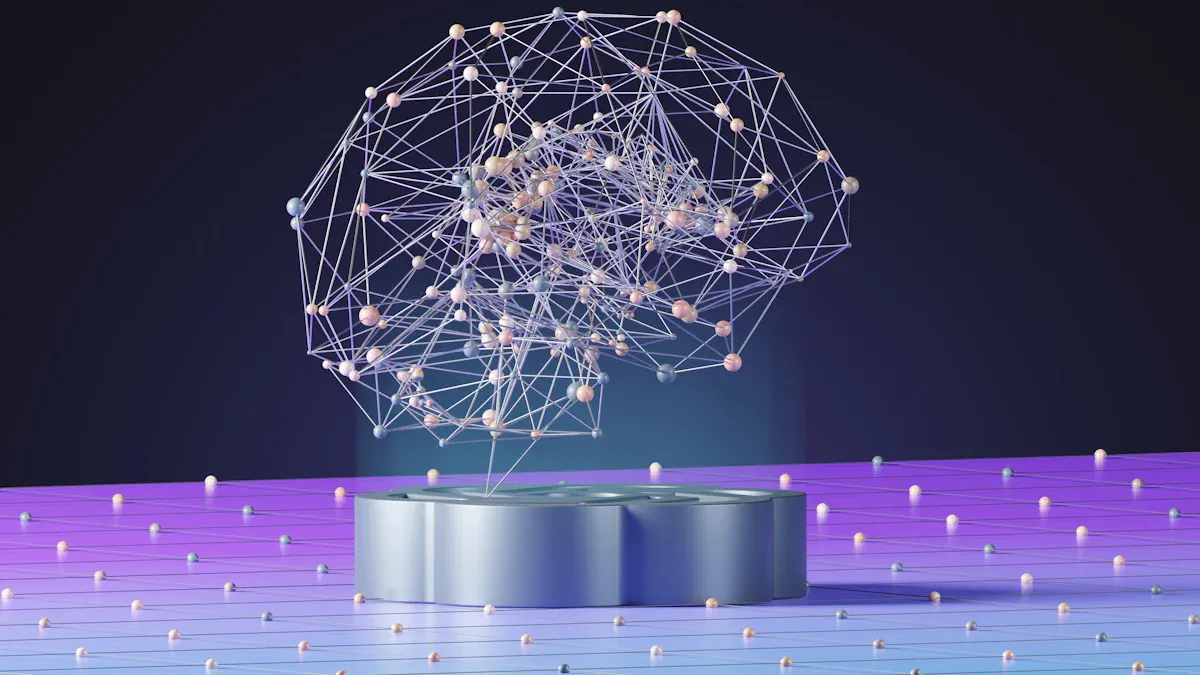Enhancing Machine Vision with Normalization Techniques

Normalization in a normalization machine vision system transforms raw visual data into consistent formats, ensuring reliable analysis. This process plays a critical role in improving data quality by addressing variations in lighting, shadows, and object contrast. For example, divisive normalization, inspired by biological mechanisms, enhances object recognition by pooling features non-linearly, allowing machines to better understand complex visual stimuli. It also supports sensory processing, reducing redundancy to compress natural images effectively. When applied, normalization techniques in a normalization machine vision system help you achieve clearer images, making systems more robust and accurate.
Key Takeaways
- Normalization makes visual data uniform, helping machines see better.
- Methods like histogram equalization improve images by balancing brightness levels.
- Using noise reduction tools, like Gaussian filtering, removes unwanted details.
- Color space normalization keeps colors steady, even with changing light.
- Learning new trends, like using AI, can make machine vision work smarter.
Understanding Normalization in Machine Vision
What is Normalization in Machine Vision?
Normalization in machine vision refers to the process of adjusting and standardizing visual data to ensure consistency and accuracy in analysis. This technique helps you transform raw images into a format that is easier for machines to interpret. By addressing variations in lighting, contrast, and color, normalization ensures that your system can process images reliably, regardless of environmental conditions.
For example, quantile normalization (QN), originally developed for microarray data, has been adapted for machine vision tasks. It ensures that data from different sources or conditions remains comparable, which is crucial for accurate machine learning models. Techniques like min-max scaling are also widely used to rescale pixel values, ensuring they fall within a specific range, such as 0 to 1. This approach improves the performance of algorithms by reducing the impact of extreme values.
Why is Normalization Essential for Machine Vision Systems?
Normalization plays a vital role in enhancing the performance of machine vision systems. Without it, inconsistencies in image data can lead to errors in analysis and decision-making. For instance, variations in lighting or shadows can cause a system to misinterpret objects or fail to detect them altogether. Normalization addresses these issues by standardizing the input data, ensuring that your system operates reliably under different conditions.
Studies have shown the impact of normalization on machine vision tasks. For example:
| Study Title | Sample Size | Normalization Methods | Key Findings |
|---|---|---|---|
| The Impact of Normalization Approaches to Automatically Detect Radiogenomic Phenotypes Characterizing Breast Cancer Receptors | 91 invasive breast cancers | Various normalization methods (e.g., z-score, log-transformation) | Normalization methods significantly influenced the predictive power of models in differentiating breast cancer receptor statuses. |
| Analysis of intensity normalization for optimal segmentation performance of a fully convolutional neural network | 218 datasets | Intensity normalization methods (e.g., histogram equalization) | Different normalization methods affected segmentation performance, with histogram equalization yielding the best results for unseen data. |
These findings highlight how normalization techniques, such as histogram equalization, can improve the accuracy of machine vision systems in tasks like medical imaging and diagnostics.
By implementing image normalization, you can enhance the quality of visual data and improve the overall reliability of your system. Whether you're working on product inspection, medical imaging, or autonomous vehicles, normalization ensures that your machine vision system performs consistently and accurately.
Key Techniques for Image Normalization

Contrast Enhancement
Contrast enhancement improves the visibility of features in an image by adjusting the difference between light and dark areas. This technique helps you highlight important details, making it easier for machine vision systems to analyze visual data. One effective method is Gamma correction, which adjusts the brightness levels based on a mathematical function. A recent optimization algorithm for Gamma correction uses entropy and edge content to select the best Gamma value. This approach enhances image contrast and provides more detailed information compared to traditional methods.
Another widely used technique is Contrast Limited Adaptive Histogram Equalization (CLAHE). CLAHE enhances image quality by redistributing pixel intensity values, ensuring better contrast in areas with poor lighting. Studies show that CLAHE improves performance metrics like RMSE and R², making it ideal for applications such as medical imaging and industrial inspections. By using these methods, you can enhance image contrast and improve the reliability of your normalization machine vision system.
Histogram Equalization
Histogram equalization is a powerful technique for image normalization. It adjusts the intensity distribution of an image, ensuring that pixel values are spread evenly across the available range. This process helps you create a normalized image with better contrast and improved visibility of features. For example, metrics like RMSE and PSNR demonstrate the effectiveness of histogram equalization in reducing noise and enhancing image quality.
A comparison of methods shows that histogram equalization outperforms other techniques in terms of dequantization error and histogram deviation. These metrics quantify the accuracy of intensity mapping and the reduction of errors in normalized images. By applying histogram equalization, you can achieve better contrast and ensure consistent data normalization across different imaging conditions.
| Metric | Description |
|---|---|
| Root Mean Square Error (RMSE) | Quantifies the difference between the up-sampled image and the ground truth image. |
| Peak Signal to Noise Ratio (PSNR) | Measures the ratio between the maximum possible power of a signal and the power of corrupting noise. |
| Histogram Deviation | Quantifies deviations from an ideal equalized histogram, indicating errors in intensity mapping. |
Noise Reduction
Noise reduction techniques minimize unwanted variations in image data, ensuring cleaner and more accurate visual information. These methods are essential for improving the reliability of machine vision systems. For example, statistical studies report significant reductions in noise levels, with decreases ranging from 1 to 16 dBA. Techniques like Gaussian filtering and median filtering effectively remove noise while preserving important features in the image.
Renewed architectural environments and noise warning devices also contribute to noise reduction, as shown in experimental studies. These interventions achieve reductions of up to 9 dBA, making them valuable for applications requiring high precision, such as medical imaging and product inspections. By implementing noise reduction methods, you can enhance the quality of image normalization and improve the performance of your system.
Color Space Normalization
Color space normalization transforms the representation of colors in an image to ensure consistency and improve processing efficiency. By converting colors into standardized formats, you can enhance the accuracy of machine vision systems. This technique addresses challenges like varying lighting conditions and color discrepancies, making it easier for machines to interpret visual data.
One effective approach involves using color sensitivity matrices. These matrices standardize how colors are represented, ensuring uniformity across different images. For example, the CIE color space employs color matching functions to project input spectra, improving the representation of colors. Spatial resolution optimization further enhances image processing by leveraging human perception disparities.
| Aspect | Description |
|---|---|
| Color Sensitivity Matrices | Standardized matrices allow for common representations of colors, enhancing image processing. |
| CIE Color Space | Utilizes color matching functions to project input spectra, improving color representation. |
| Spatial Resolution | Exploits human perception disparities to optimize image representation and processing efficiency. |
You can also use the LAB color space to calculate hue value discrepancies. This method improves segmentation boundaries, making it easier to differentiate objects in a normalized image. Additionally, normalizing hue angle differences enhances the ability to distinguish between similar colors, which is particularly useful in applications like product inspection and medical imaging.
- The color wheel helps measure pixel distances on the hue circle, improving clustering quality.
- LAB color space calculations refine segmentation boundaries, ensuring better object differentiation.
- Hue angle normalization techniques enhance color distinction, improving the reliability of image processing systems.
By implementing color space normalization techniques, you can achieve consistent and accurate color representation across various imaging conditions. Whether you're working with min-max scaling or other normalization techniques, this approach ensures that your machine vision system processes images effectively and reliably.
Practical Applications of Normalization Machine Vision System

Product Inspection in Manufacturing
Normalization techniques play a crucial role in product inspection within manufacturing environments. By enhancing image contrast, these methods make product features more detectable, ensuring accurate identification of defects or inconsistencies. For instance, image normalization improves segmentation, allowing machine vision systems to differentiate between acceptable and defective items. Techniques like equalization standardize pixel intensity values, which is particularly useful for Optical Character Verification (OCV) tasks.
Statistical tools further validate the effectiveness of normalization in manufacturing. Adjusted control limits for U and P charts help monitor production quality, while normalized individuals (IN) control charts ensure consistent data analysis. These methods improve the reliability of inspections, reducing errors and enhancing overall system performance.
Optical Character Recognition (OCR)
Normalization and standardization are essential for Optical Character Recognition (OCR) systems. They prepare text data for analysis by improving readability and accuracy. For example, Ocropy's normalization tool enhances data preprocessing, leading to better recognition rates. Combining normalization with techniques like noise reduction and binarization further refines text clarity, ensuring accurate character detection.
Deep neural networks (DNNs) benefit significantly from normalization. When paired with additional training data, DNNs outperform shallow networks in OCR tasks. This combination improves accuracy metrics, making OCR systems more reliable for applications like document digitization and automated data entry.
Quality Control in Food Processing
In food processing, data normalization ensures consistent analysis of visual data, enabling precise quality control. By addressing variations in lighting and color, normalization techniques help machine vision systems detect defects in food products. For example, min-max scaling standardizes pixel values, ensuring accurate identification of discoloration or contamination.
Image normalization also enhances segmentation boundaries, making it easier to differentiate between acceptable and defective items. Techniques like histogram equalization improve image contrast, ensuring reliable inspections under varying conditions. These methods contribute to better quality control, reducing waste and ensuring compliance with industry standards.
Medical Imaging and Diagnostics
Normalization plays a critical role in medical imaging and diagnostics. It ensures that visual data is consistent and reliable, which is essential for accurate analysis. When you work with medical images, variations in resolution, intensity, and scale can lead to errors in diagnosis. Normalization and standardization address these issues by transforming raw data into a uniform format.
For example, preprocessing steps like resampling dimensions to isometric voxels help homogenize image resolutions. This is particularly important for modalities such as MRI, where intensity normalization improves the clarity of the image. By standardizing these parameters, you can enhance diagnostic accuracy and ensure that medical research benefits from high-quality data.
| Evidence Type | Description |
|---|---|
| Data Normalization | Additional steps like feature transformation address differences in range, scale, and distribution. |
| Image Preprocessing | Resampling dimensions to isometric voxels homogenizes resolutions, critical for MRI and other modalities. |
| Diagnostic Accuracy | Preprocessing enhances image quality, improving diagnostic precision and advancing medical research. |
These techniques also reduce the risk of artificially low p-values in statistical tests, especially in small cohorts. By applying normalization, you can ensure that diagnostic tools operate effectively, even when working with diverse datasets.
In addition, normalization machine vision systems improve segmentation boundaries in medical images. This makes it easier to identify abnormalities, such as tumors or lesions. Enhanced segmentation leads to better treatment planning and improved patient outcomes. Whether you're analyzing X-rays, CT scans, or MRIs, normalization ensures that your system delivers consistent and accurate results.
By implementing these methods, you can advance medical diagnostics and contribute to more reliable healthcare solutions.
Advantages and Challenges of Data Normalization
Benefits of Normalization in Machine Vision Systems
Normalization enhances the accuracy and reliability of machine vision systems. By standardizing visual data, you ensure that your system performs consistently across varying conditions. For example, normalization techniques like histogram equalization improve image quality by balancing pixel intensity values. This makes it easier for your system to detect features and analyze objects accurately.
Another benefit is the reduction of noise in images. Noise reduction methods, such as Gaussian filtering, clean up visual data, ensuring that your system processes only relevant information. This improves the precision of tasks like product inspection and medical diagnostics. Additionally, normalization simplifies the integration of data from multiple sources, enabling your system to handle complex datasets effectively.
Common Challenges in Implementing Normalization
Implementing normalization comes with its own set of challenges. You may encounter issues such as:
- Lack of Data Governance: Without clear policies, data mapping can become chaotic.
- Data Complexity: Complex structures and formats make normalization efforts more difficult.
- Data Security and Privacy: Integrating data from various sources increases the risk of breaches.
- Data Silos and Legacy Systems: Outdated systems hinder the integration process.
- Lack of Data Quality: Poor-quality data undermines the effectiveness of normalization.
- Changing Data Sources and Formats: Evolving data requires adaptable normalization mechanisms.
These challenges can slow down the implementation process and reduce the effectiveness of your normalization machine vision system.
Solutions to Overcome Normalization Challenges
To address these challenges, you can adopt targeted solutions. Selecting the right normalization method is crucial. For example, edgeR-TMM and DESeq-RLE methods perform well for metagenomic gene abundance data, reducing false positives and improving accuracy. Similarly, scaling methods like TMM excel in microbiome research, enhancing predictive models for disease outcomes.
Batch correction techniques, such as Limma and BMC, also offer effective solutions. These methods improve data consistency, making it easier to integrate information from diverse sources. Transformation methods capture complex associations in data, ensuring that your system adapts to changing formats and structures.
By implementing these solutions, you can overcome common challenges and ensure that your normalization machine vision system operates efficiently. Whether you're working with medical imaging or product inspections, these approaches enhance the reliability and accuracy of your system.
Future of Normalization in Machine Vision
Emerging Trends in Normalization Techniques
Normalization techniques are evolving rapidly, driven by advancements in data processing and analytical tools. You can expect several key trends to shape the future of machine vision systems:
- Dynamic scaling adapts to real-time changes in data distributions, ensuring your system remains responsive.
- Advanced algorithms powered by AI enhance preprocessing speed and quality, making normalization more efficient.
- Improved data consistency reduces variations, enabling valid comparisons across diverse datasets.
- Enhanced analytical insights from quality normalization lead to more accurate interpretations of visual data.
- Uniformly scaled datasets support better decision-making, ensuring reliable outcomes in critical applications.
These trends highlight the growing importance of normalization in delivering consistent and actionable results. By staying informed about these developments, you can ensure your machine vision system remains at the forefront of innovation.
Integration with AI and Deep Learning
AI and deep learning are transforming how you approach normalization in machine vision. These technologies enable systems to learn and adapt to complex visual data. For example, AI-driven normalization can automatically adjust for variations in lighting or contrast, ensuring consistent image quality. Deep learning models, such as convolutional neural networks (CNNs), excel at identifying patterns in normalized data, improving object detection and classification.
You can also leverage AI to optimize preprocessing workflows. Automated tools can analyze datasets, identify inconsistencies, and apply the most effective normalization techniques. This reduces manual effort and enhances the accuracy of your system. As AI continues to advance, its integration with normalization will unlock new possibilities for machine vision applications.
Innovations in Hardware and Software for Normalization
The future of normalization also depends on innovations in hardware and software. High-performance GPUs and specialized processors now enable faster and more efficient image normalization. These advancements allow you to process large datasets in real time, making your system more responsive.
On the software side, new tools and frameworks simplify the implementation of normalization techniques. For instance, open-source libraries provide pre-built functions for tasks like histogram equalization and noise reduction. These resources make it easier for you to integrate normalization into your machine vision workflows.
Additionally, hybrid solutions that combine hardware and software innovations are emerging. These systems offer optimized performance, ensuring that your machine vision applications can handle even the most demanding tasks. By adopting these technologies, you can enhance the reliability and efficiency of your normalization processes.
Normalization is essential for making machine vision systems more accurate and reliable. By standardizing visual data, you ensure consistent performance across diverse conditions. Techniques like histogram equalization and noise reduction improve image quality, enabling better object detection and analysis.
🚀 The future of normalization looks promising with advancements in AI, deep learning, and hardware innovations. These developments will empower you to build smarter, faster, and more efficient machine vision systems. Staying updated on these trends will help you unlock the full potential of your applications.
FAQ
What is the main purpose of normalization in machine vision?
Normalization ensures consistency in visual data, making it easier for machines to analyze images accurately. It addresses issues like lighting variations, noise, and contrast differences, improving the reliability of your machine vision system.
How does histogram equalization improve image quality?
Histogram equalization redistributes pixel intensity values, enhancing contrast and visibility. This technique helps your system detect features more effectively, especially in poorly lit or low-contrast images.
Can normalization techniques work with real-time applications?
Yes, modern normalization methods, combined with high-performance hardware, enable real-time processing. Techniques like dynamic scaling adapt to changing conditions, ensuring your system remains responsive and accurate.
What role does AI play in normalization?
AI automates normalization by analyzing data and applying the best techniques. It improves preprocessing speed and accuracy, helping your system adapt to complex visual data and deliver better results.
Are normalization techniques suitable for all industries?
Yes, normalization techniques are versatile. They enhance machine vision systems in industries like manufacturing, healthcare, and food processing. By standardizing data, they ensure consistent performance across diverse applications.
💡 Tip: Choose the right normalization method based on your specific application to maximize system performance.
See Also
Do Filtering Systems Enhance Accuracy In Machine Vision?
Investigating The Role Of Synthetic Data In Vision Systems
Analyzing Flaw Detection Techniques In Machine Vision Systems
